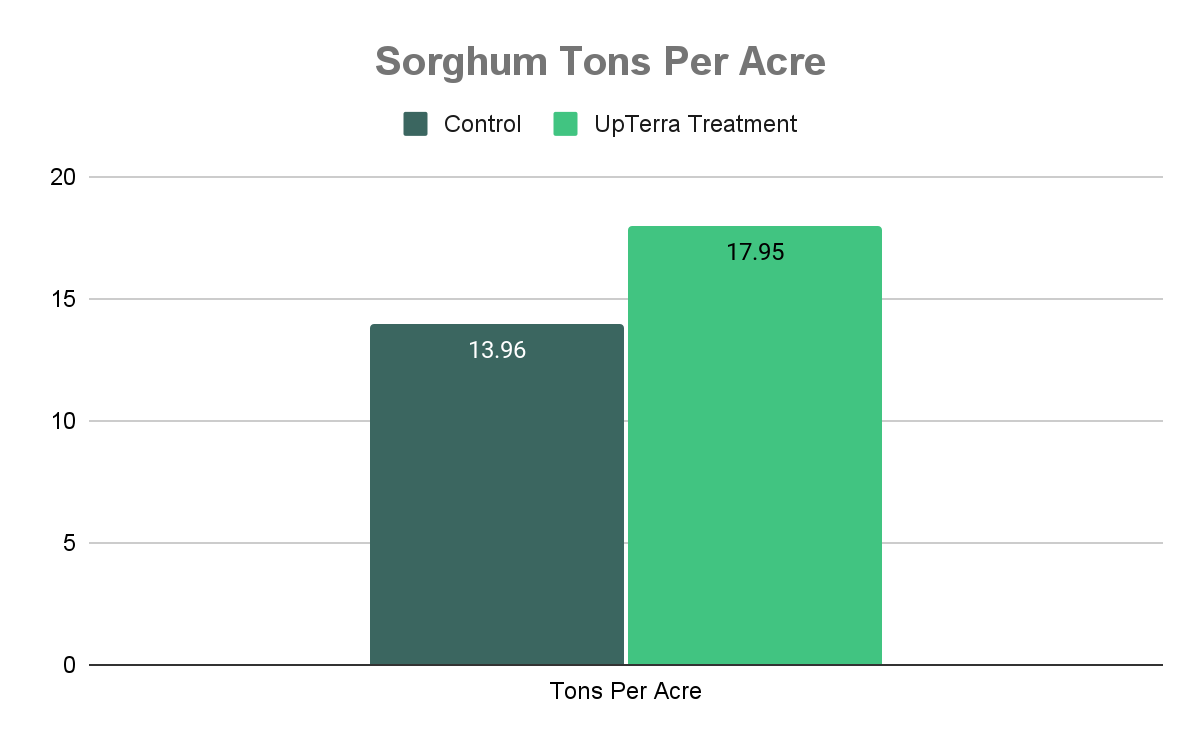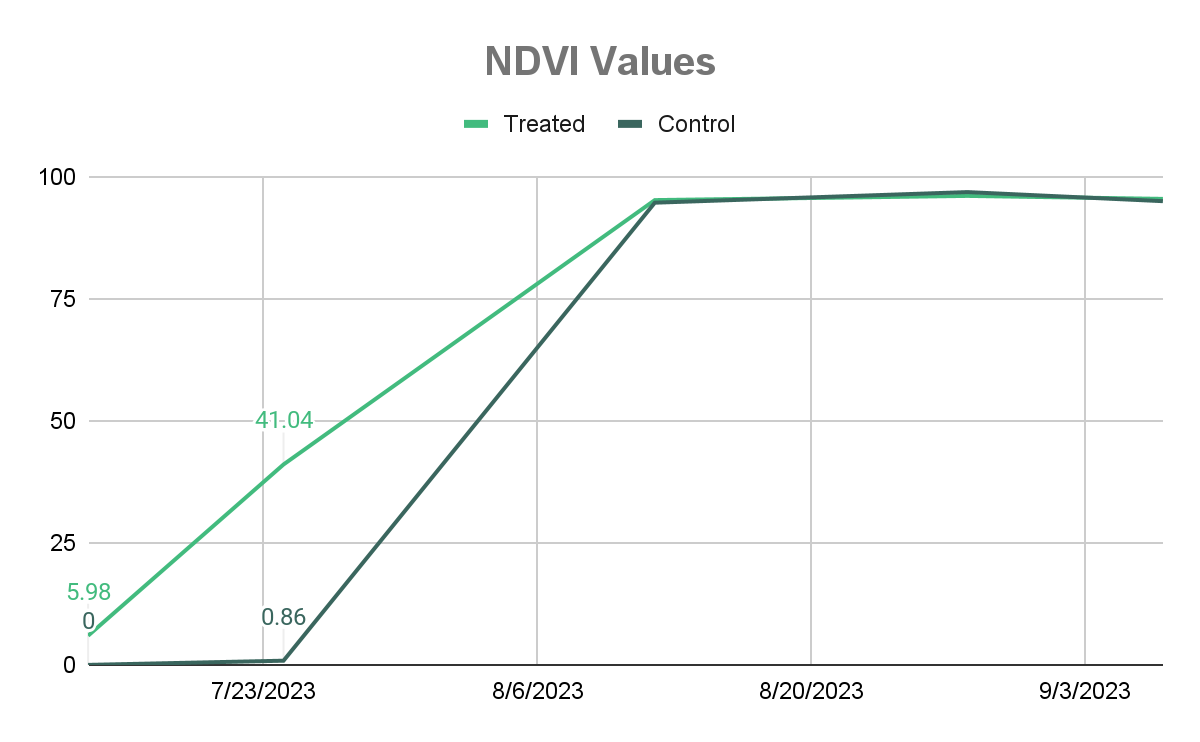BACKGROUND
Production Year: 2023
Location: Texas
Program: UpTerra Water and Row Crop General Wellness
Planting Date: 7/10/2023
Harvest Date: 9/28/2023
Seed Variety: Sweet Ton
Planting Rate: 8 lbs/acre
Flow Device: 6-inch
TerraNet™: General Wellness
Set Up: Separate Fields
Acres: 120 per field
Challenge(s): Salts in water, high pH soil
Goal(s): Higher yield & biomass
Trial Results:
-
- 28.85% silage yield increase
- 100% return on investment
- $159.60 per acre in additional income
METHODS
- Soil type and slope were evaluated to confirm comparability between both fields (Figure 1).
- Weather and historical performance were considered during the set-up and analysis phase of the case study.
- Fertilizer rates, planting populations and dates, irrigation rates, and harvest dates remained consistent between control and treatment fields.
- A paired T-Test and Least Significant Difference analysis were performed on this data.
- Each field was monitored throughout the growing season to make note of any developmental differences and to make sure any difference in farming practice and implementations were noted as well.
Data Collected
- Yield – Manual
- Satellite Imagery
- Drone Imaging
- Scouting – General
Soil Map Data
The slopes remain within 3% and are consistent throughout both fields. The soil types are variable but the variability is similar on control and treatment fields. Both range from that of fine, sandy loams and loams. With all the soil variability similar on both sides, the fields act as a fair comparison.
Weather
Precipitation amounts were very high prior to planting but slowed significantly to stay within an average range during the months of July and August. The month of September, however, the rainfall amounts dropped below half where the area received .66 inches of rain compared to the average of 1.46 inches. During this time, temperatures were also 2 to 3 degrees higher than average. This, coupled with lower rainfall amounts at the point of crop development could lead to a much quicker dry-down and less time for grain development.
RESULTS
Yield

Based on the harvest data provided by the grower, the UpTerra treatment generated a 28.58% increase in tons per acre of harvested sillage compared to the control field. This resulted in an additional income of $159.60 per acre.


Satellite Imagery
The satellite imagery taken during the 2023 growing season shows typical biomass accumulation of the treatment field and control field during early-season crop development. The NDVI values of each field are graphed below. The graph shows much earlier plant development in the treated field and these higher NDVI values were maintained all the way until the end of the season where the control caught up and closed the gap.

CONCLUSION
The results indicate that the UpTerra System had a positive effect on yield and plant development. Specifically, there was a yield increase of 28.85% in sorghum silage. The grower had a 100% return on investment, generating approximately $159.60 per acre in additional income. Since growing practices and soil types were the same on either side of the field, the data team concluded that there was a notable effect of the UpTerra System on production for this product evaluation.
